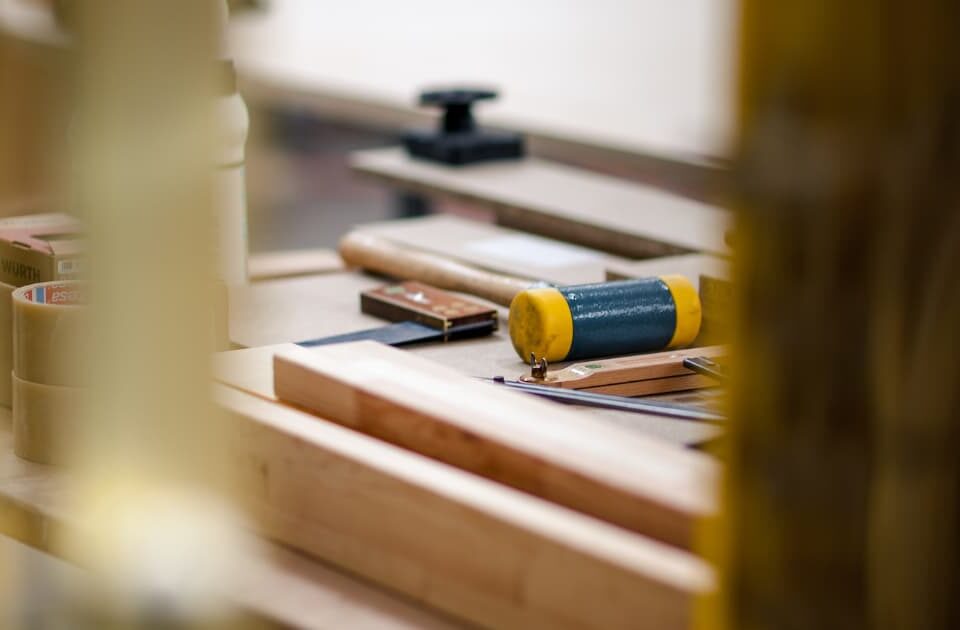Kitchen Cabinet Buying Guide

Custom Wood Gate Design: Key Things to Consider
31st August 2021
Popular Bathroom Countertop Materials
13th September 2021When it comes to selecting kitchen cabinets for your home, it’s not just storage you are selecting but also one of the main aesthetic features in your kitchen space. As a joinery and interiors specialist company, our job is to bring to life your dream kitchen in the most cost effective and efficient way possible – but in order to do that we first need to be on the same page with regards to materials, aesthetics, and detailing.
In this blog post we will be introducing just some of the most popular kitchen cabinet materials and styles that we regularly work with, while also identifying some of the most common mistakes to avoid.
Choosing the right style for your kitchen

Believe it or not, your kitchen cabinets contribute a great deal towards the overall appearance and style of your kitchen. From natural wood to the gloss of a white coat finish or the matt of a deeper colour to juxtapose a light and bright space, the right style can elevate your kitchen space and instantly take it from dull to vibrant in the space of a single project.
Kitchen cabinets are also integral to the functionality and practicality of your kitchen both in terms of their placement and their finish, and that’s where material comes into play.
Let’s take a closer look at some of the most popular cabinet materials on the market.
Timber-faced MDF or chipboard units
This is achieved by taking the chipboard and attaching a thin strip of authentic timber to either side of the board – creating the illusion of one slab of wood but without the weight or the cost associated with hardwood. A great trick to achieve expensive looking cabinets without the price tag, these are cost effective and provide a great aesthetic to match a natural country kitchen.
Plywood kitchen cabinets
The best thing about plywood is that it uses natural materials in the form of strips of timber to create a very solid and long lasting cabinet. From there, the basic structure can be wrapped or covered in laminate, natural wood facing, or it can be painted in any colour you like.
Real wood cabinets
If it’s durability you’re looking for then you might think that real wood is the best option – but these are not only expensive and heavy, but they can warp over time in a way that cabinets crafted from manmade materials do not. These may look good but there are more cost effective and smarter choices on the market for those seeking the natural wood effect.
Melamine-faced chipboard kitchen cabinets
Essentially a lightweight chipboard cabinet with a layer of melamine coating on the outside to give the cabinet that smooth and glossy finish ideal for Instagram. These cabinets are a cost effective and functional choice, with doors that are easy to open and close, hang well, and look good. The chipboard is also easy to shape and adorn with decorative detailing making them ideal for homeowners who want more of an intricate finish.
MDF cabinets
MDF, Medium Density Fibreboard, is like chipboard but denser and more expensive – and it provides a super smooth surface ideal for painting, laminating, or any other finish you want for your kitchen.
Standard (off-the-shelf) vs bespoke

While off the shelf kitchen cabinets are cheaper and easier to source and fit in a single day or DIY weekend, the value of bespoke joinery and kitchen cabinet installation is that we make every cabinet from scratch, building it for your specific kitchen in line with your requirements. Offering a completely tailor-made service, bespoke kitchen design considers every corner, nook, cranny, and wall in your space and finds way of maximising the way you use that space – and it’s not always as expensive as you might think.
The cost of bespoke joinery for your kitchen will depend on your preferred materials and the numbers of cabinets you need making, as well as other details pertaining to your chosen supplier.
Common mistakes to avoid
The number one mistake to avoid is opting for flatpack cabinets. Not only are these difficult to assemble and made by a machine which produces hundreds of items a day, but the likelihood of ill-fitting corners and an untidy finish is high, and the cost of labour to get the cabinets put together and installed often eats into any cost saving you made by buying flatpack.
Another common mistake we see when it comes to kitchen cabinets in particular is not giving enough consideration to height and placement. Before installing cabinets, you should always check that every door will be able to open without impeding on the ability to open another cabinet; and you should also check the height restrictions of the home and the work surface as well as the end user to ensure that the final placement is suitable.
Got more questions? Get in touch with our team to discuss your ideal kitchen cabinets today.




